 |
 |
|
| DESIGN | BOAT
DESIGN
| |
|
|
___ BOAT
DESIGN & TRENDS ___
|
_______________________________________________________________
BOAT INDUSTRY
The
naval sector is one of the oldest transport sections
and wherein more progresses were incorporated
among the vehicular segment. Practically a revolution
since the
sixties.
The
incorporation of the multihulls, high performance,
design assisted by computers,
composites, simulators,
software, hydrodynamic, aerodynamics, motors
and propulsions, commands and electronics. In
forty years a new generation
of concepts took form, even whether the traditional
boats still coexist and maintain its own space
and the classic
absorbs a growing public. That is a sector
where the tradition and the modern live well together.
However the technological evolution, design and engineering
seems only to have operated the beginning of a revolution
where new concepts are being patented the whole time.
Six months don't pass without a new revolutionary concept
is introduced by the naval industry.
On
this last year, a trimaran with hydrofoils
crossed the channel "de la Manche" fastest
than an airplane, counting the times of take-off
and landing.
Being
the naval sector very extensive and counting
with vast industry activities,
it involves normally small
industry and series, that allows incorporate
technological progresses quickly. It is the priority
section of composites
employment, new metals, plastics, electronics,
inks, varnishes, rescue material, diving material,
insulating,
woven and processes. The engineering R & D
is applied directly, once most of the boats are
built in a unitary
way.
The design and development is accomplished allover the
world by small countless architecture and engineering
offices, composing countless tendencies and principles.
The naval sector turned a great laboratory of
trends, design, materials and studies.
|
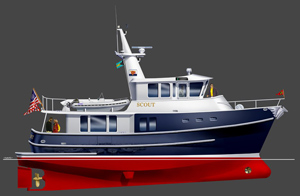
Rick Etsell - Scout |
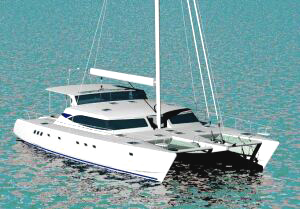
Derek Kelsall SS70 |
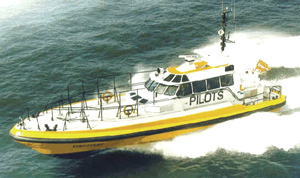
Camarc Design - Pilot Boat |
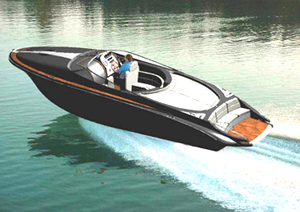
Runnaboat - Mediterraneo Design |
_______________
BOAT DESIGN
The boat industry has innumerous sections that will
be referred by means of annexed directories to this WEB
page.
From new aluminum alloy light boats to big composites
megayachts the boat industry has an enormous diversity.
Introducing
the main trends and researches, new materials
and process, this section will support boat
industry
development, reported as one of the first worldwide
industry as the main targets of "factory of factories" portal
as well as small and medium enterprises characteristics.
____________________________________________________
COMPUTER SCIENCE BOAT DESIGN
Since the Boat
Design concept was first visualized, boat and yacht designs have entered
a period of modern
computer design methods, which are random and interactive
processes that may consist of stages or general
trials.
A large amount
of refinements were made over time, the features of random and interactive
design methods have in effect transformed design
process.
The modern design
methods are capable of producing suitable designs; they are expected to
produce optimum ones. This is because the
random
process requires
a great deal of design time and thus designers have substantial time
to explore all potential designs. Moreover, being able to recognize the
effects of slight
modifications on the design at once, designers may alter every design
requirements
while concentrating on a particular design aspect or overall aspect.
In the computer age, boat and yacht designers have
advantages from computer technology as a tool for reducing
tedious calculations.
State-of-the-art
innovation is represent by the development of an integrated 3D modeling
and Computer-aided Design (CAD) method for boat
designs,
which combines all distinctive boat design software
modules in a single system.
This state-of-the-art
design method captures the features of modern design methods
form; from paper and pencil sketches (by means
of scanners) to computer screen modeling, and designers are able
to recognize the effects of subtle modifications
on the design.
This random
process also makes available a great deal of design time and thus reduces
the exploration efforts, which results in optimum designs. Less difficulties
of data redundancy, inconsistency, and flexibility
structure are obtained in addition
|
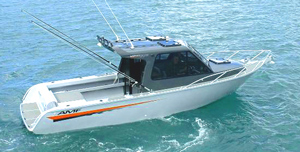
AMF - Viper 77 Aluminium Boat |
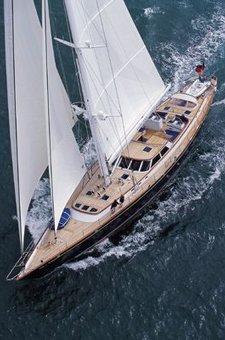
Alloy Yachts - Happy Four |
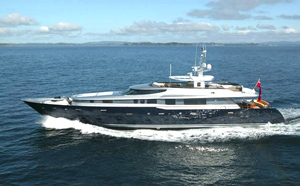
Alloy Yachts - Adib |
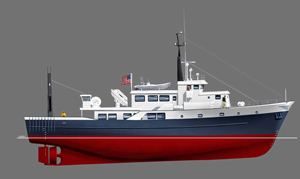
C.W.Payne - Phoenix |
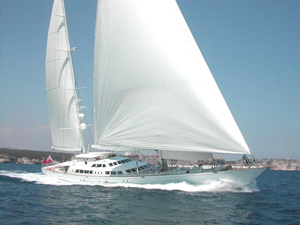
Ron Holland - 64 m Felicita |

TRENDS
AND MULTIHULLS
The
demand for multihulls has increased dramatically in the past
ten years. In particular, there is currently
an enormous interest in power and sail catamarans
both for leisure and service boats.
The
technical advantages of the multihull, combined with the wide
acceptance
of the hull form in both commercial and charter use, have created
an unprecedented demand.
__________
HISTORY
The
long history of multihulls started from Early Polynesians
would lash two large canoes together and sail from
one island to another. These people considered
the stability of a two-hulled vessel to be safer than that
of just one hull.
Until
two centuries ago Polynesia was totally isolated from
the
rest of the civilized world, which was developing boats
as more traditional lines - single-hulled
keelboats, or monohulls.
In
the 1780s Captain Cook reported seeing beautiful boats
of up to 120 feet long, which
were built of carefully
painted and polished
wood. Exposure to the outside world brought European
diseases to these people, who had no immunities to
them. The populations
and
societies were ravaged and
these beautiful vessels disintegrate away. Only some
native activity in the Hawaiian Islands the catamaran
design
remained.
Then,
in the late 1870s, Nathaniel Herreshoff designed and
built the 25 foot catamaran Amaryllis.
At
1952 -- in England, the Prout brothers designed a U shaped
hull,
instead of the V shape that had
preceded
it, and they included
centerboards. Now the
boats would actually tack.
They
became popular in Europe because of their speed and comfort,
and the
long slow
process of design
evolution took a step forward.
By
the late 50's there were quite a few sailors experimenting
with new
designs and building materials.
With the
advent of fiberglass,
resins, and marine plywood
these boats could be built light and strong.
Jim
Brown, a protégé of Piver, started
designing his own trimarans, called Searunners. He
designed them with
a wider beam for a safer, more stable
platform, along with other modifications.
Soon Norman Cross, Lock Crowther, John Marples, and
innumerable
designers from
allover the world was building
on the lessons that could be learned from
previous designs, both with trimarans and catamarans.
These
designers realized
the requirements
for detailed, precise
plans, and for the designer to be involved
with the builder from the beginning of construction
in order to assist to create
a
safe, fast, comfortable boat.
Brian Eiland - Wonderful combinations of sail & power Multihull Yachts - special mast-aft rig new motorsailor design is an innovative new sailing rig known as the DynaRig, which some of those virtues may be summarized as:
A cruising rig that is more aerodynamically efficient, which should enable you to get the same speed with less sail area, or more speed with the same sail area; delivers a clean leading edge for all the sails; allows the whole sail plan to be roller-furled away or deployed; allows the reefing of the sails without turning into the weather; divides up the total sail area into smaller manageable sizes; maintains its balance center (CE) with different sail combinations; produces less overturning moments; can be operated without leaving the cockpit. One single person could sail this fairly large rig from anchor up to anchor down. All the sails roller-furl, and the mainstaysail & the mizzen both can self-tack.
________________________
NORMAN CROSS
This is the official name of the multihulls designer
Norman A. Cross. His work, and its involvement in the
evolution of modern multihull design, is possibly one
of the greatest contributions by any single designer
of multihull sailing craft to date. In the actual WEB
site will be expanded to include all of his designs from
his first Cross 24 designed in 1963, to his Cross 78R
designed in the late 1980's.
Norman
Cross died August 14, 1990 at the age of 75. His experience
developed his engineering skills and love
for sailing translated to his prolific multihull
design work in a large range of boats from 14' to 78'.
Experimenting
a Norman Cross trimaran is unforgettable since the
fantastic seakeeping skills of his boats. Until
now his plans are supreme
and searched by thousands of builders.
|
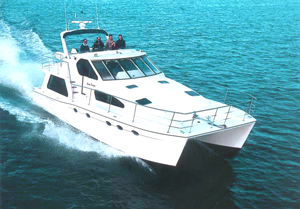
Northwest Cat |
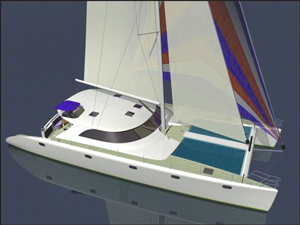
Lidgard Yacht Design |
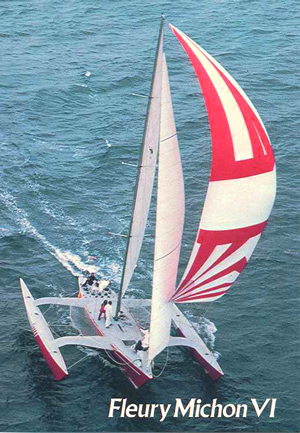
John Shuttleworth - Fleury Michon VI |
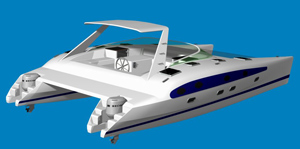
John Shuttelworth -Power 40 |
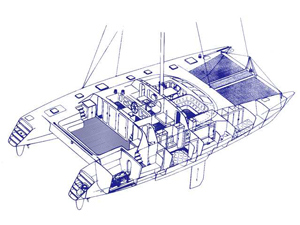
John Shttleworth - 70 Cat |
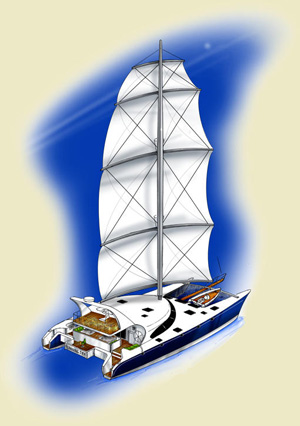
Brian Eiland - Runnning TideYachts
DynaRig MotorSailer |
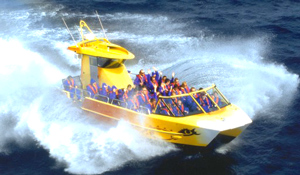
Q-West - Great Lake Jet |
"Thesis" Norman Cross 39
preparing for the 1976 Transpac |
NORMAN
CROSS
Some of the recognized plans:
<=>
Cross 39
"Defiance" is a beautiful example of Norm Cross' late
work.
CROSS 45R
=>
|
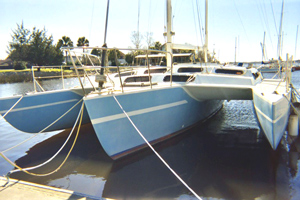 |
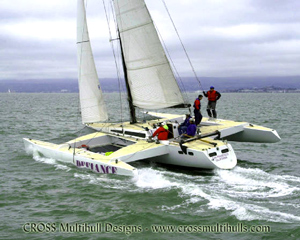 |
| |
________________________________________________________
FERRY MULTIHULLS
The catamaran hull form is exceptionally good for cargo
transport, and consequently catamarans make excellent
vehicle ferry platforms, particularly for high-speed
services.
Catamarans
have spacious wide decks, which are not only appropriate
for a large number of vehicles,
but also allow vehicles to drive on, and drive
off. Vehicle decks are high above the water, independent
engine rooms
and very high stability margins; catamaran
vehicle ferries are particularly safe.
The
passenger ferries operated at speeds of 16 knots
or less until recently, with long cycle periods to
unload
and load passengers and vehicles. In the beginning
of 1990s, large catamaran ferries of aluminum start
operating
on ferry routes around the UK, and then on other
ferry routes around the world.
These
ferries operating at twice the speed of conventional
ferries, was first made by Incat in Hobart.
With
very short ‘turnaround’ times, allowing
transporters to provide twice as many trips as before and radically
reduced travel times for their passengers and cargo.
The introduction of the Incat ferries, and after by
others competitors, generated a revolution in ferry transport,
which continues today. Incat and other companies like
Austel established a new boatbuilding industry in Australia
that dominates world markets for high speed ferries.
The
innovations in service provided to the owners
and operators of the ferries and Incat’s
ferries innovative design features have been successful
in
world markets,
transforming the ferries industry.
________________________
INCAT HISTORY
Incat’s high speed catamaran ferries developed
the concept wave-piercing design that allows the twin
hulls with sharp bows to ‘pierce’ the
waves rather than riding over them. The collaboration
between
Robert Clifford, a boatbuilder and ferry
operator, and Phillip Hercus, a boat designer
introduced these innovations
in design for fast, lightweight catamaran ferries.

BOAT AND BOAT BUILDING CAPABILITY
The marine industry, and the boatbuilding sector
in particular, represents one of the largest
sophisticated manufacturing and/or high value
added sectors. In addition, the sector has
a substantial regional presence having significant
potential for increased growth.
The boats industry is characteristically composed
of small and medium companies, largely by workmanship.
Dependent of skilled workforce, technologies and
know-how, with structures depend on planning, and
mainly of stability because boat construction is
a long time-consuming.
However the naval industry develops countless
sections in parallel, and generates countless resources,
being one of the most important sections for implementation
of an infinity of applications and diversifications
that understand from the tourism to the fishing,
and that involves productions of materials of a
wide range, from wood to motors.
It is indispensable in all the countries that
count with waterways, marine coast, and lakes,
of endowing of boatbuilding industry in conformity
with their potential.
The naval industry is important exporter, and
capable to generate a sustained development in
numerous areas.
Several types of naval industries can be developed
with little capital, and to grow quickly, creating
productive regions and generating plenty structures
of employments.
Direct connected areas are: Ports, Marine Supply,
Boatbuilding and Boat Repair, Tourism, Recreation,
Research, Education and Services.

INDUSTRY STRATEGIES & PLANS
The Marine Industries sector
development within trade and innovation seeks continuous
key issues, opportunities
and support to improve growth of this priority industry
sector.
Conducting
structured industry workshops and presentations
in various regional marine centers should
respond to trends, requirements and inquiries.
The
Departments of State, Development, Trade and
Innovation have to commission the Boating Industry
Associations
to analyze and summarize the position of
the marine industry. The research should identify
key issues in domestic and
international boat and boat building and
the growth and competitiveness of these industries.
The following priorities, has to be prioritized for
the Marine Industries Sector development:
¤ Regulations
¤ Boat and Boat Building Capability
¤ Infrastructure
¤ Training and Skills
¤ Technology and Innovation
¤ Marketing and Investment
¤ Regional Strategies
__________________________
INFRASTUCTURE
The development of marine industries requires
competitively priced and conveniently located infrastructure
in the
form of commercial, industrial and boatyards and
areas offering access to boatlifts, slipways, dry-docks,
manufacturing and marine services capabilities and
deepwater berths.
To attain excellent quality, well-established infrastructure
throughout the regions with early planning for further
developments have to be established.
________________________________________________
TECHNOLOGY AND INNOVATION
Marine industries are highly dependent of leading research
and development, innovation and technology uptake. Emerging
technologies in marine manufacturing, including fiber
composite boat building, are an essential component in
a globally competitive sector.
The
Marine Industries Sector in collaborative project
can develop and deliver a series of technology
programs for marine manufacturers. They have to introduce
and facilitate training and seminars for boatbuilders
covering new moldings techniques for composite builders
as infusion/closed and super forming of aluminum
developed from aerospace technology, for aluminum
builders.
Existing technologies such as CAD and 3-D design modeling,
fast tooling, fast prototyping, which have not been
widely adopted by smaller producers, also have to be
introduced.
Manufacturing
competitiveness is also a function of getting
quality products to market faster. The Marine
Industries have to accelerated product development
programs, specifically designed for boat builders.
Seminars on Supporting Manufacturing Techniques
and
training workshops to implement these procedures
also should contribute.
_________________
SUPPLIERS
The incentive of local cargo boating and commercial
fishing sectors should attract a concentration
of first class marine suppliers to the marine
area. Products manufactured by marine suppliers
include electronics, including nautical and
navigational instruments, hydraulics, engines,
boilers, refrigeration, life-saving equipment,
deck machinery and a multitude of other equipment.
______________________________________________________________
COMMERCIAL FISHING AND RECREATION
Commercial fishing is one of the oldest industries
areas and remains an important part of the marine
business for regional development. The commercial
fishing sector provides thousands of jobs in the
area and accounts for gross annual sales and exportation.
|
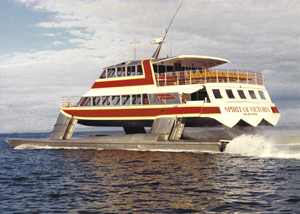
Incat - Hull 016 |
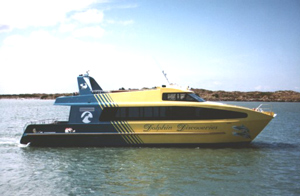
Q- West - Discovery |
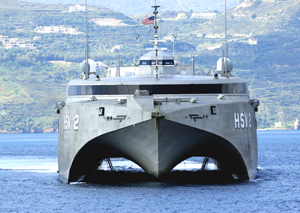
Incat - Hull 61 |
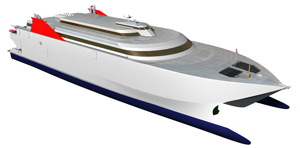
Incat - Hull 64 |
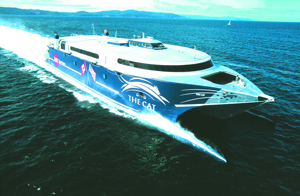
Incat - Hull 059 |
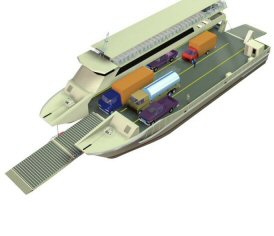
Incat 40 - RoRo
|
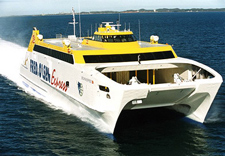
Austal - Bocayna Express 66 |
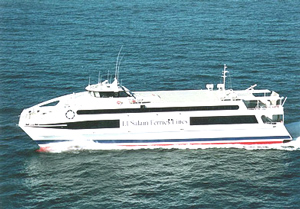 Austal - Fares Al Salam - 56 m
Austal - Fares Al Salam - 56 m |
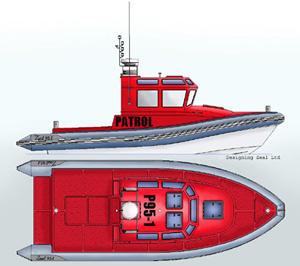
Design Zeal - OPR 95 |
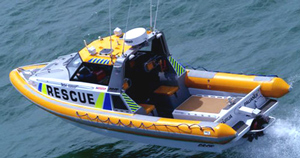
De Villiers - QRV 30 |
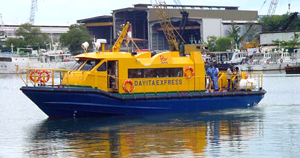
Camarc Boats - Waterjet Alloy 25 knots |
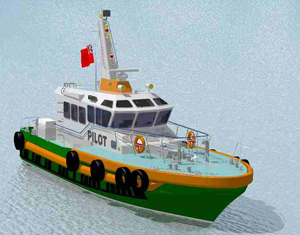
Camarc 8 m - Steel |
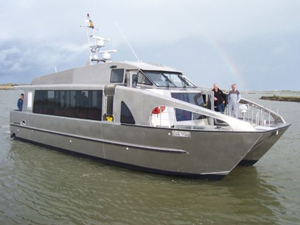
West Clipper II 15 m |
_______________________
BOAT DESIGN SECTION
This
is a section for boat builders, boatyards,
investors, industry and designers, which highlights
innovations
in sailboat and powerboat design and provides
a directory of related websites. Coverage includes
news, research,
and marine related subjects, Boat Design & Industry
Directories.
The Boat Design section contains design projects,
details of courses, software, process and
materials R & D .
The Boat building & production section contains
links to boat plans for power and sail, articles
and details of boat building projects.
The Index provides
links to sites for catamarans, V hulls, concep boats and propulsions,
Yachts, small boats, fishing boats, aluminum boats, and an infinity
of boat matters.
|
 |
__ Next
Page - Directory Boat Design |
| |
|
|
| |
|
|
|
